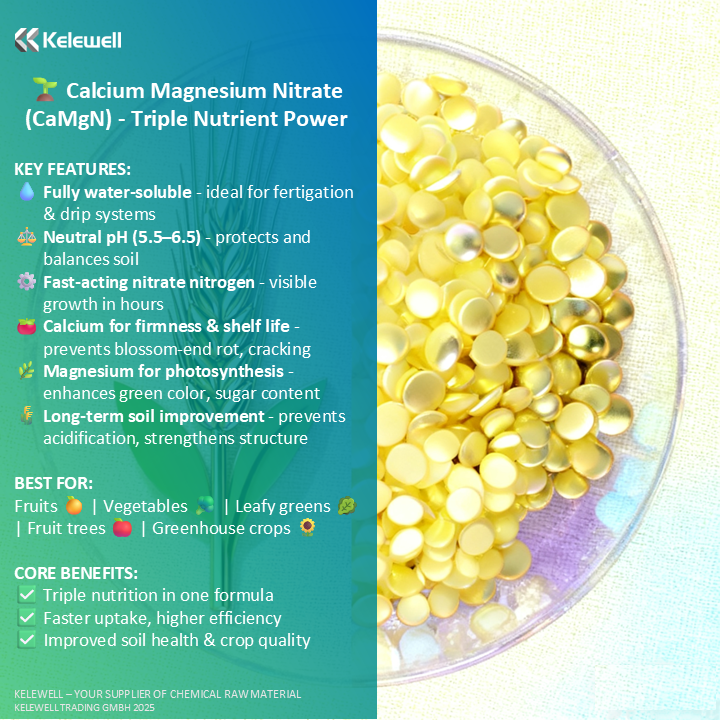Global Fertilizer Market Updates: ICL Enters European Battery Market with Lithium Iron Phosphate/India’s Imports to Decline by 18% in 2025/China’s Urea Production Capacity to Rise by 4 Million in 2025
- Camille W.

- Feb 10
- 3 min read
ICL Enters the Battery Market with Lithium Iron Phosphate Joint Venture 🔋
Israeli specialty minerals company ICL has officially announced a joint venture with Shenzhen Defang Nano Technology Co., Ltd. to establish a facility for lithium iron phosphate (LFP) cathode active material production in Europe. The project, with an initial investment of around €285 million, will be located at ICL’s Sallent plant in Spain. This venture is poised to significantly expand ICL’s footprint in the battery materials sector, marking an important step forward as the company enters the European market.
Phil Brown, President of ICL’s Phosphate Division, emphasized that this expansion is driven by ICL's strong upstream position in the global specialty phosphates market. By leveraging the expertise of Defang Nano, a leading battery materials producer, ICL plans to tap into Europe’s growing demand for energy transition solutions, particularly through the use of lithium iron phosphate, a key component for EV batteries. The site, which was previously used for potash fertilizer production, will be repurposed to accommodate large-scale LFP production, with potential for further expansion.
India’s Fertilizer Imports Projected to Decline by 18% in FY2025 🌱
India’s fertilizer import landscape is expected to shift significantly in FY2025, with a projected decline of 18.4%. As of December 31, urea sales in India increased by 6.4%, from 28.2 million tons to 30 million tons. Meanwhile, total fertilizer sales rose by 7.3%, reaching 52.6 million tons. However, key changes are emerging in the types of fertilizers being imported. Diammonium phosphate (DAP) imports have decreased by 12.7%, while potash imports surged by 15.3%, and compound fertilizers saw a 27.1% increase.
The Indian government has been striving towards self-sufficiency in urea production, and this goal is becoming more achievable. The country’s efforts have been bolstered by innovations such as nano-DAP, aimed at reducing the consumption of phosphorus fertilizers without compromising crop yields. At the same time, domestic fertilizer production has also increased by 1.6%, reaching 39.16 million tons, with urea production growing by 6.4%. This shift reflects a broader push toward sustainable agriculture and domestic self-sufficiency.
Belarus to Cut Potash Fertilizer Production by 1 Million Tons in 2025 📉
Belaruskali, the Belarusian potash giant, has announced plans to reduce its potash fertilizer production by approximately 0.9 to 1 million tons in 2025 due to large-scale equipment maintenance at its Soligorsk-4 mine. This reduction, expected to last for seven months, is part of the company's broader efforts to enhance the global potash market by boosting prices.
While the production cuts are expected to lead to a modest decrease in Belarus’s potash exports, the impact on global potash prices could be significant. The market is already seeing price hikes, and this announcement will likely lead to further upward pressure on prices. In November 2024, Belarusian President Alexander Lukashenko proposed a joint effort with Russian producers to reduce potash production by 10-11%, aiming to stimulate the global market and improve prices.
US to Impose 25% Tariffs on Canadian Goods – Impact on Global Potash Prices ⚖️
In a move that could shake up the global potash market, former President Trump announced that the US will impose a 25% tariff on goods imported from Canada and Mexico, starting February 1. This announcement has triggered swift and severe retaliation from Canada, which has promised to respond with counter-tariffs.
Canada is the world’s largest exporter of potash, accounting for over 40% of global exports, with the US being its largest importer. This tariff imposition is expected to ignite a new round of price hikes in the global potash market, with the stock prices of Canadian potash companies Nutrien Ltd and Mosaic Co. already showing increases in response to the news.
The potash market, already affected by geopolitical tensions and trade policies, faces further uncertainty. Canada, Russia, and Belarus together control around 68% of the global potash supply, so any shifts in production or trade from these regions will have far-reaching effects on global prices and the broader agricultural market.
China to Increase Urea Production Capacity by 4 Million Tons in 2025💡
China is expected to increase its urea production capacity by 4 million tons in 2025, addressing supply challenges and stabilizing domestic prices. Urea, the largest nitrogen fertilizer product by both production and consumption, is facing a supply surplus in 2024, which will put downward pressure on prices.
Experts predict that the increase in production capacity, combined with stable supply, will help ensure a reliable source of urea for the domestic agricultural sector, which remains one of the largest consumers of nitrogen-based fertilizers. However, the outlook for urea exports remains uncertain due to low international prices. Despite this, the overall supply of urea is expected to remain abundant, with prices likely ranging between 1,600 to 2,000 yuan per ton, lower than in 2024.




Comments